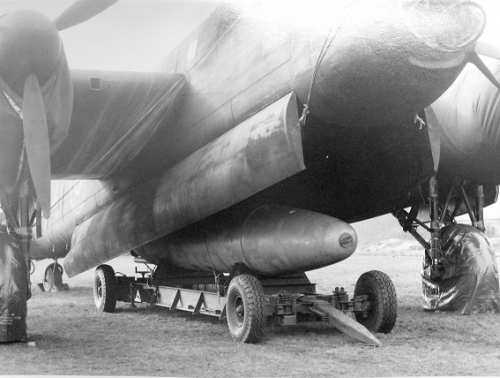- Joined
- 18 March 2008
- Messages
- 3,529
- Reaction score
- 880
Helmover giant WWII torpedo
I recently read David Edgerton’s excellent “Britain's War Machine: Weapons, Resources and Experts in the Second World War” which made mention of the “Helmover” giant, R-R- Merlin powered aerial torpedo. This weapon was designed by Air Commodore William Helmore, PhD, MP, chief science adviser to the RAF in WWII and famous for the Turbinlite and his radio broadcasts of the Schneider Trophy races and D-Day. Most of his own scientific work was on ignition for internal combustion engines which he put to use in designing the huge Helmover torpedo.
Tony Williams described the Helmover as thus on another web forum:
"There's a ten-page chapter on it in 'Rolls-Royce Armaments' by David Birch, published by the Rolls-Royce Heritage Trust. An excellent book, BTW, with much information about lots of obscure projects.
The idea of the Helmover was that it ran for much of the time on or just under the surface (with a snort to provide air to the engine), under radio control from the aircraft which had dropped it (which would fly figure-of-eights at a safe distance above and behind it). On approach to the target it would be directed to submerge, the Meteor engine continuing to run via compressed air bottles. One problem was that it could not be guided when submerged.
Speed was 40 knots (surfaced or submerged) range 50 miles on the surface, three miles submerged. It carried exactly one ton of explosives, which should have been enough to deal with any ship. For use against ships in harbours protected by booms, they were experimenting with a nose shaped to ride up over such obstacles.
It was indeed sized to be carried in a Lancaster bomb-bay. There was a proposed ship-launched version which was much longer to provide more volume for fuel and oxygen cylinders. This measured 49'9" long and weighed 20,900 lb. Ranges were 150 miles surfaced, 8 miles submerged. I've no idea how they would have controlled that (perhaps a spotter plane) but it makes the 24" Long Lance look like a little toy..."
I don’t have access to the David Birch book but I have found the patent for the Helmover. It is US2413350 patent and can be accessed and downloaded via Google patents. The attached images are from the patent and presumably give an impression of what it looked like. There is meant to be a picture of a prototype being loaded onto an AVRO Lancaster bomber out there. If anyone has anymore information please respond to this thread.
I recently read David Edgerton’s excellent “Britain's War Machine: Weapons, Resources and Experts in the Second World War” which made mention of the “Helmover” giant, R-R- Merlin powered aerial torpedo. This weapon was designed by Air Commodore William Helmore, PhD, MP, chief science adviser to the RAF in WWII and famous for the Turbinlite and his radio broadcasts of the Schneider Trophy races and D-Day. Most of his own scientific work was on ignition for internal combustion engines which he put to use in designing the huge Helmover torpedo.
Tony Williams described the Helmover as thus on another web forum:
"There's a ten-page chapter on it in 'Rolls-Royce Armaments' by David Birch, published by the Rolls-Royce Heritage Trust. An excellent book, BTW, with much information about lots of obscure projects.
The idea of the Helmover was that it ran for much of the time on or just under the surface (with a snort to provide air to the engine), under radio control from the aircraft which had dropped it (which would fly figure-of-eights at a safe distance above and behind it). On approach to the target it would be directed to submerge, the Meteor engine continuing to run via compressed air bottles. One problem was that it could not be guided when submerged.
Speed was 40 knots (surfaced or submerged) range 50 miles on the surface, three miles submerged. It carried exactly one ton of explosives, which should have been enough to deal with any ship. For use against ships in harbours protected by booms, they were experimenting with a nose shaped to ride up over such obstacles.
It was indeed sized to be carried in a Lancaster bomb-bay. There was a proposed ship-launched version which was much longer to provide more volume for fuel and oxygen cylinders. This measured 49'9" long and weighed 20,900 lb. Ranges were 150 miles surfaced, 8 miles submerged. I've no idea how they would have controlled that (perhaps a spotter plane) but it makes the 24" Long Lance look like a little toy..."
I don’t have access to the David Birch book but I have found the patent for the Helmover. It is US2413350 patent and can be accessed and downloaded via Google patents. The attached images are from the patent and presumably give an impression of what it looked like. There is meant to be a picture of a prototype being loaded onto an AVRO Lancaster bomber out there. If anyone has anymore information please respond to this thread.



